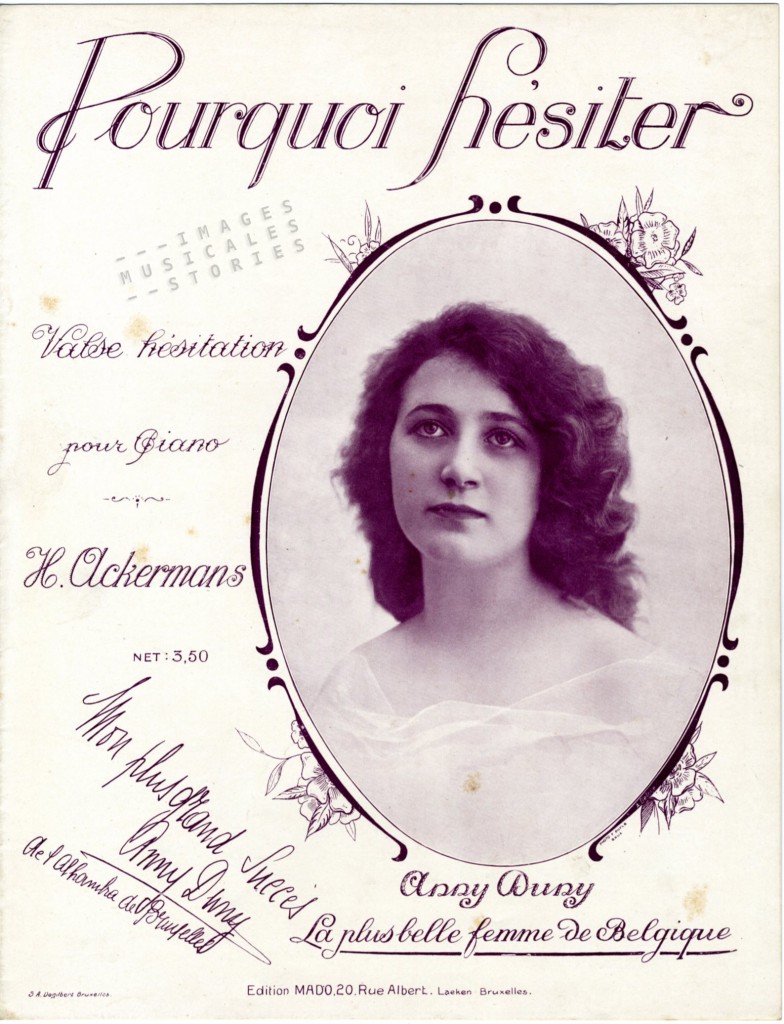
On the cover of Pourquoi hésiter is a portrait of Anny Duny. She won the first modern national beauty contest in Belgium in 1921. The event, known as La plus belle femme de Belgique, was organised by Maurice Cartuyvels de Waleffe (1874-1946). He was a Belgian aristocrat working as a journalist and publisher in France where he was mocked for his Belgian roots and pompous rhetoric. Maurice de Waleffe was the founder of the only daily newspaper that came out at noon, Paris Midi. He became an important figure in the fashion world and had a keen eye for new trends.
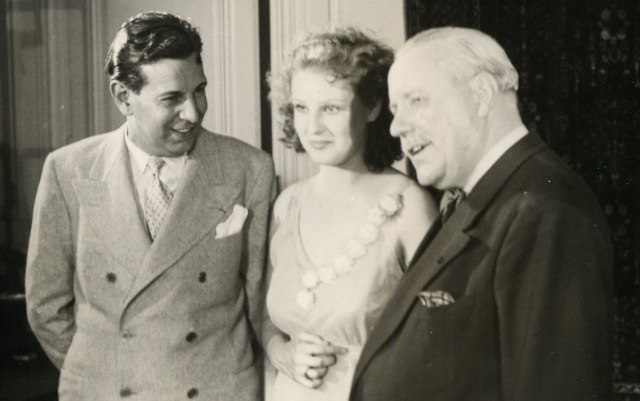
In 1920, after suffering the harshness of the First World War, Maurice de Waleffe took an initiative to raise spirits. He launched the first competition for the most beautiful woman in France ‘La plus belle femme de France’ in the newspaper Le Journal. More than 2000 young women answered the call. A jury of painters and sculptors (including only one woman!) shortlisted 49 contenders, aged between 17 and 23 years. With an original multimedia campaign, de Waleffe organised a popular vote to chose the winner.
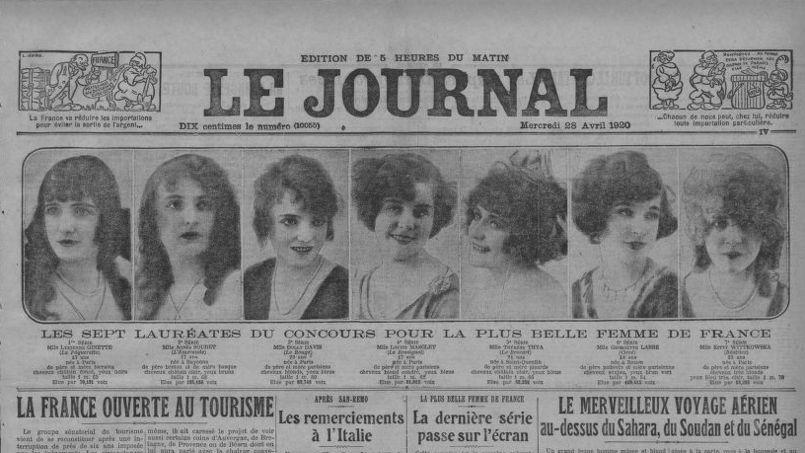
Every day his journal published the portrait of one of the 49 young girls. At the same time, but on a weekly basis, the photographs of seven candidates were shown in the cinemas throughout France. Each competitor appeared on the screen in full length, in a head and shoulder shot, and in the group picture. To ‘preserve their modesty’ the girls didn’t appear under their real name. Each girl received a romantic stage name in accordance with the title of the group to which she belonged: Flowers, Precious Stones, Birds, Goddesses, etc. The cinemagoers received a voting paper. This might have inspired Roger de Valerio in 1922 when he illustrated the sheet music The Girl on the Film…
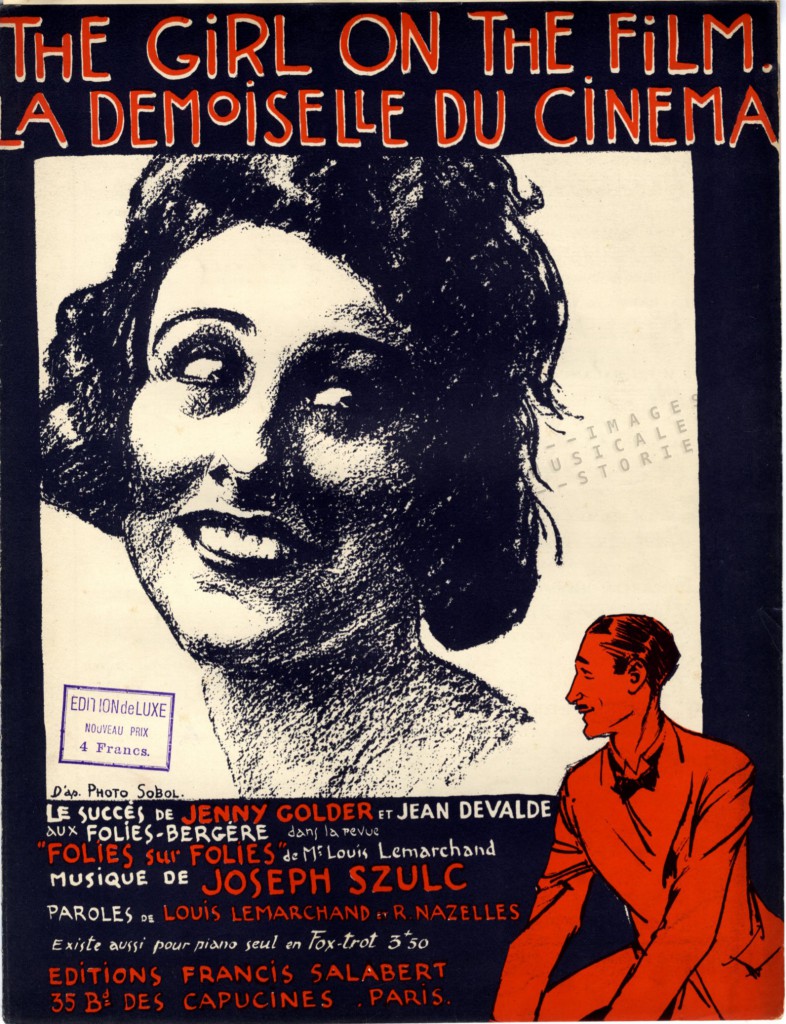
After seven thrilling weeks of mesmerizing the French audiences (and after thousands of newspapers sold), seven finalists remained. The final election was held at the Parisian premises of Le Journal. It was one of the group Precious Stones, namely Emeraude or Agnes Souret, who won and could call herself Miss France. Some years after her victory she would succumb to a peritonitis, only 26 years old.
The contest was repeated in 1921 after which it was discontinued for five years.
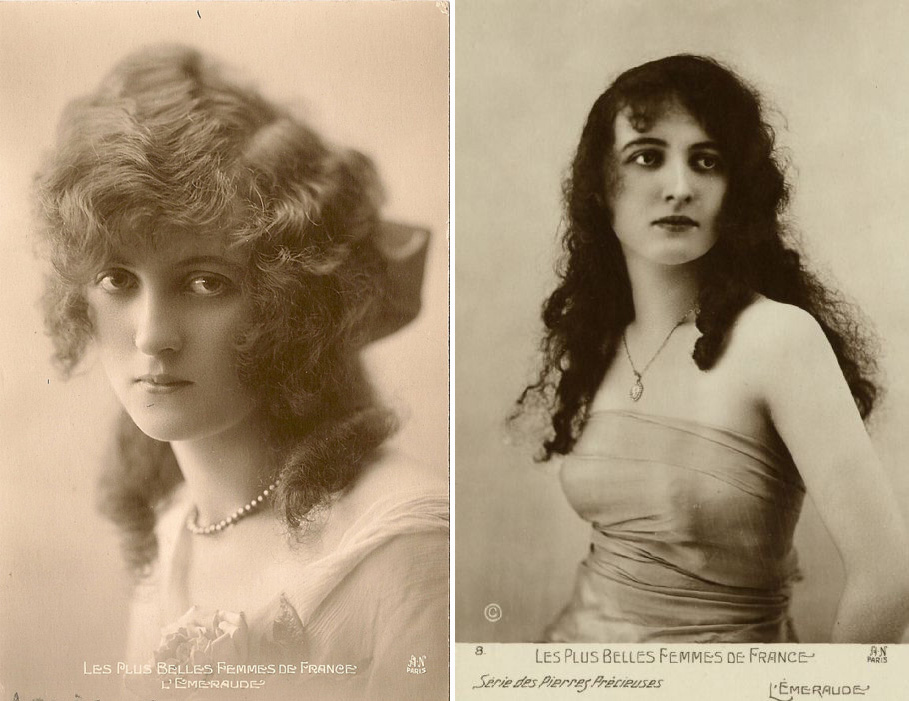
In 1921 Maurice de Waleffe organised the same contest in Belgium. He again worked with a newspaper (La Dernière Heure) and with the cinemas. Out of 800 contestants a shortlist of 21 candidates was split up in three series: Laces, Virtues and Opera Heroines.
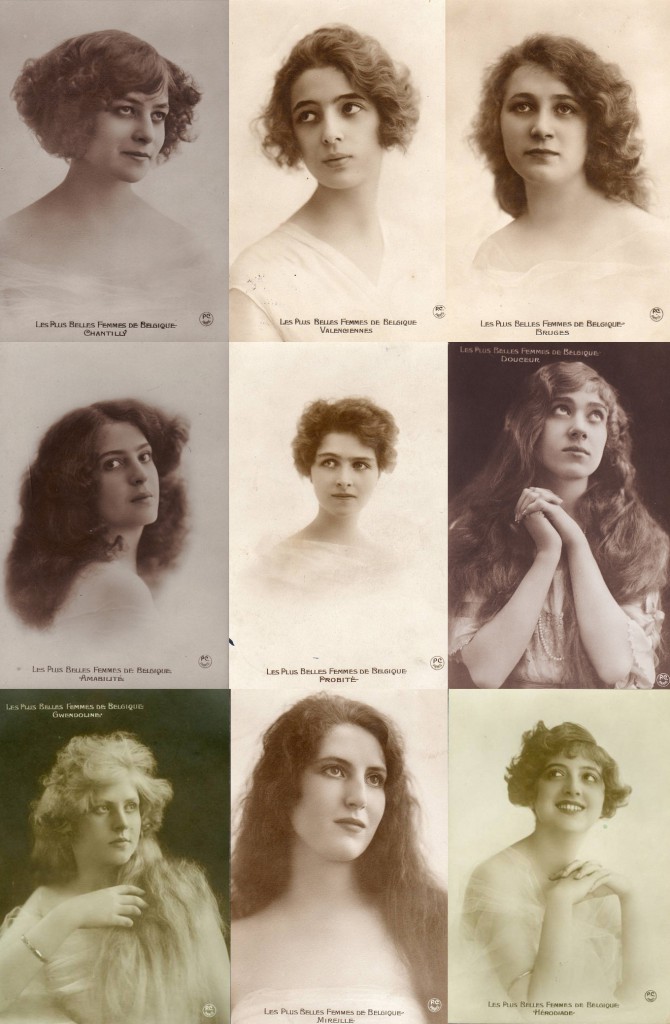
Out of the group of Laces, it was Bruges (or Anny Duny from our sheet music cover at the beginning) who won, and started a modest career as La plus belle femme de Belgique.
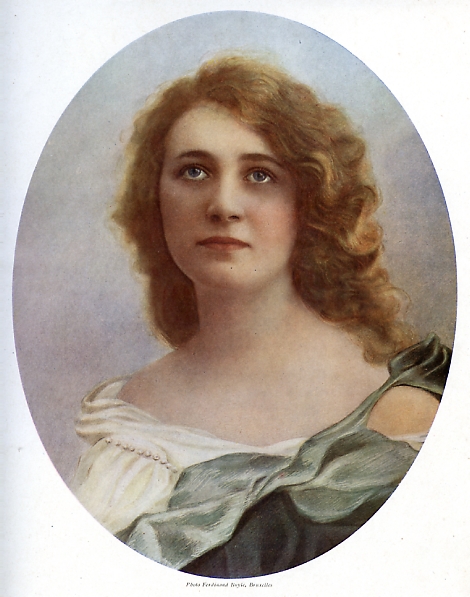
Anny’s new title brought moderate fame: she appeared in revues but not for long and not in important roles. She is known to have performed in slightly racy tableaux vivants such as Indiscreet Baths, The Return of the Merry Widow or The Décolletage through the Ages. According to a newspaper these were a great triumph attended by the jet set. If you ask me, it seems a bit old-fashioned to patiently gaze at an artistic still, in the hope of catching a dash of nudity. Where is the appeal when –at that time– you could have attended a striptease burlesque or an erotic motion picture.
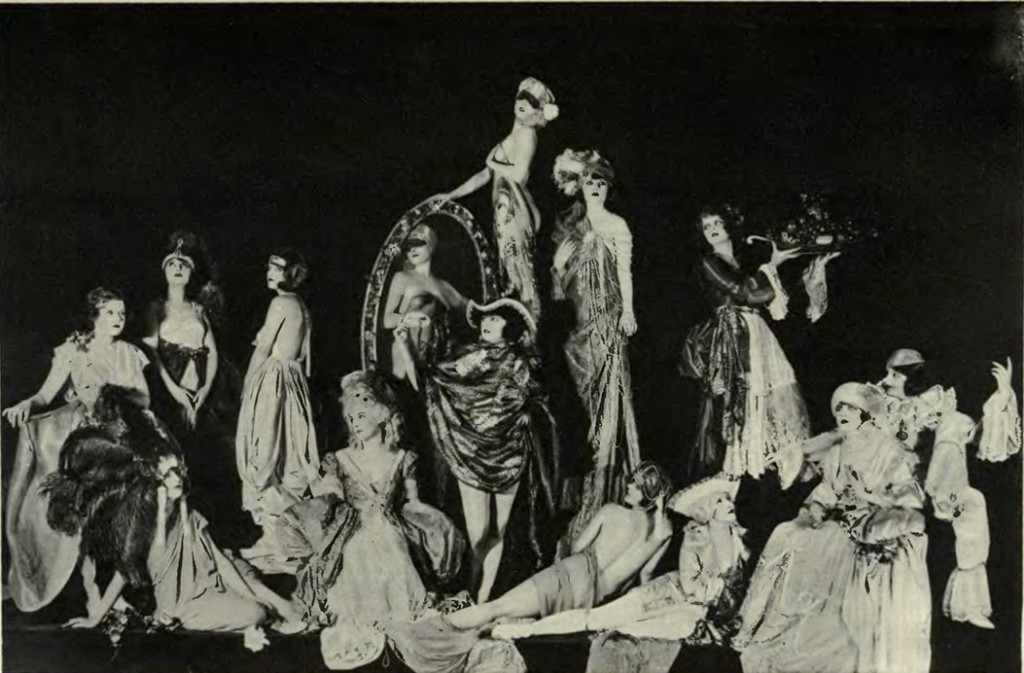
Speaking of tableaux vivants, this is our 2015 bubbly Miss Belgium ready to conquer the world. So, pourquoi hésiter (why hesitate)?
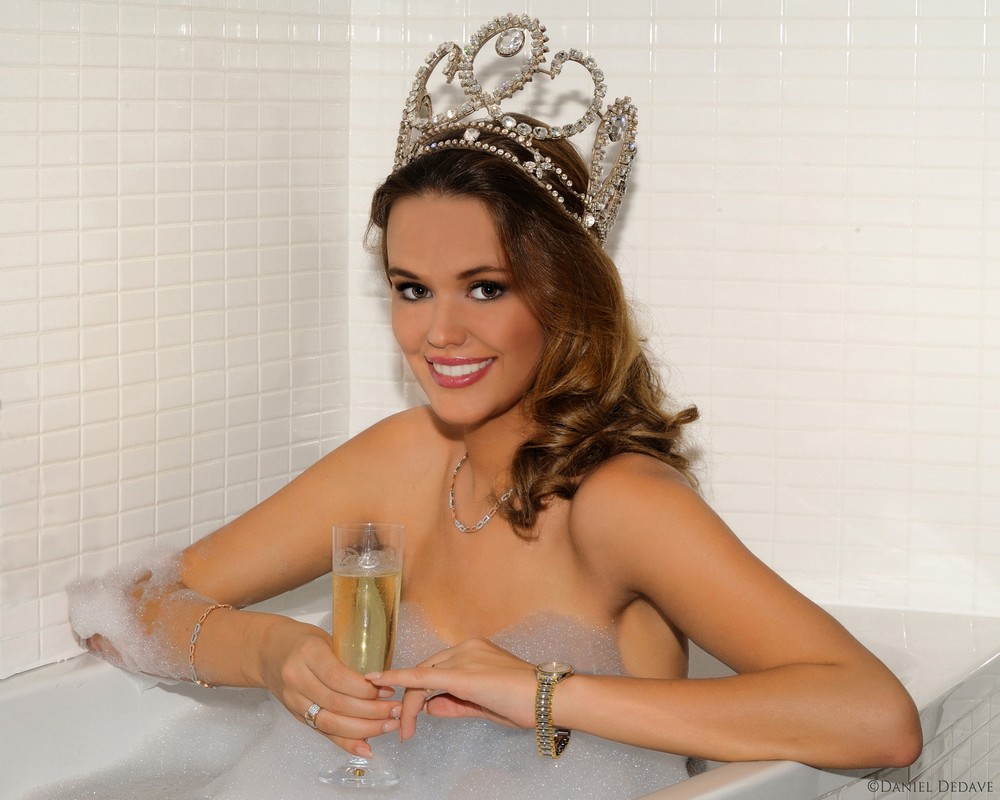
Further reading: Beauty and Big Business by Aro Velmet: http://fh.oxfordjournals.org/content/early/2013/11/07/fh.crt083.full.pdf

Weer een prachtig artikel met fraaie afbeeldingen !